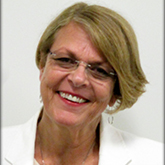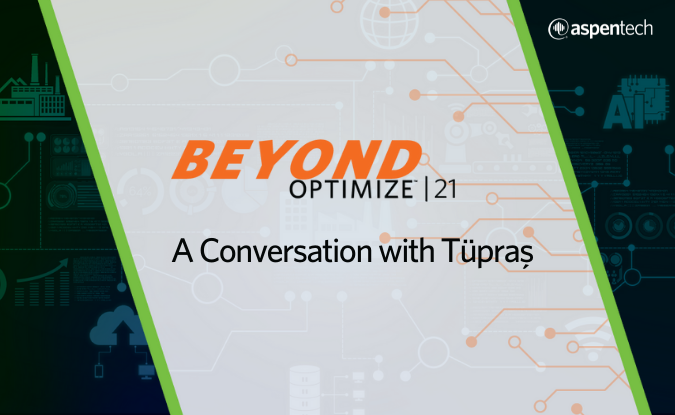With AspenTech’s Beyond OPTIMIZE: New Insights in Performance Engineering and Production Optimization fast approaching in early October our blog editor Marilyn Guisbond spoke with Admar Bueno, Digital Transformation Manager PO, at Braskem S.A., a Brazilian petrochemical company, to get a preview of his Beyond OPTIMIZE session: “Improving Reliability and Energy Consumption of Dilution Steam Generators Using Rigorous Simulation.”
Marilyn Guisbond: Thank you, Admar, for taking the time to speak with me today. Can you tell me a little bit about your current position at Braskem?
Admar Bueno: I started with Braskem in 2010 as a process engineer; currently, I'm a responsible for the digital transformation plan for Braskem for a huge region, including Brazil, Mexico, the US and Europe. This area of focus, called Predictive Industrial Effectiveness, is new for Braskem and the objective is to accelerate digital transformation in the company through increasing value using digital tools. Before joining this role at the beginning of this year, I was a process engineer in the steam cracker unit.
MG: What is your perspective with regards to the importance of digitalization?
AB: At Braskem, we understand the importance of advancing digitalization in the entire company. It is fundamental to improve performance and to reduce costs with a smaller investment compared to other alternatives that demand physical intervention at the equipment-level or at the plant. Digital tools, in some cases, can provide similar results to these alternatives, for example, for energy efficiency or CO2 emission reductions, and the value is much higher compared to the investment. And these tools are easily scalable and can be applied more widely. In my opinion, if companies do not implement digitalization, they risk competitiveness.
MG: How do you see digitalization helping with Braskem carbon neutral and sustainability goals?
AB: For Braskem to be carbon neutral in 2050, digitalization is a very important cornerstone. It is not the only way to achieve carbon neutrality, but it is very important because it can be implemented quickly, and you can easily share your results internally and externally. One way to reduce CO2 emissions is through higher efficiency. But changes to improve efficiency in the plant are expensive and might require high investment. By using digital tools in systems with high energy use, Braskem is already achieving great results in reducing the CO2 emissions from operations, especially in the pyrolysis furnaces.
“The heat exchanger is continuing to work well—we’re talking two years and no failure! I will share in more detail during my presentation, but AspenTech really helped us understand what was happening and what was causing the problem.”
MG: What advice would you give organizations looking to make similar gains in reaching their sustainability and digital transformation objectives?
AB: Many companies all over the world, such as chemical companies or energy companies, will start to adopt these technologies more easily. But keep in mind that these tools don't work well if you don't have information or if your information is unreliable, because it’s not magic. The better the data, the stronger the model will be. And if a company has no data, they need to invest on instrumentation and data acquisition, especially for important systems to be able to see opportunity for improvement and achieve their operational goals.
In addition to this, companies need to think about the opportunity or problem to solve, and based on that, choose the best solution. For example, if you want to understand the impact of a variable in a KPI, you can use statistical analysis. But if you want to analyze equipment reliability, another tool might make more sense. The key is to link properly the best tools with the problem at the plant. You want to start locally with engineers who are closest to the challenge or the problem. And then once they see value, build it up from there. And it is more than one problem in one system, but about having a whole digital mindset in the whole company.
MG: Can you give us one or two highlights that our audience can look forward to hearing more about during your presentation at Beyond OPTIMIZE?
AB: My presentation will share the ways in which AspenTech’s Performance Engineering Solution was crucially important in solving a historical problem in our heat exchangers that we were having for over 20 years every six months. This presentation is a very real-life case example of troubleshooting that solved an important reliability problem with the heat exchanger because we now have extended the useful life of the equipment. The heat exchanger is continuing to work well—we’re talking two years and no failure! I will share in more detail during my presentation, but AspenTech really helped us understand what was happening and what was causing the problem. But we also increased energy efficiency, reduced water consumption and reduced CO2 emissions. I really like this case, because it is a good case with great impact in reliability, energy use and sustainability.
MG: Now that we’ve heard a little about your session, we’d love to know what other sessions you are looking forward to attending?
AB: I'm really excited about the sessions that talk about hybrid models because I see good opportunities from this technology as part of digital transformation.
MG: Thank you, Admar. Is there anything else you’d like our audience to know?
AB: Yes, they can find more information about my presentation here.



Leave A Comment